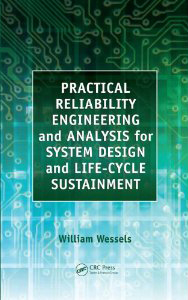 (CRC Press: Boca Raton, FL) — William Wessels wrote the new book, Practical Reliability Engineering and Analysis for System Design and Life-Cycle Sustainment (CRC Press, 2010), for practicing engineers and introduces the interference theory to applications for design-for-reliability.
(CRC Press: Boca Raton, FL) — William Wessels wrote the new book, Practical Reliability Engineering and Analysis for System Design and Life-Cycle Sustainment (CRC Press, 2010), for practicing engineers and introduces the interference theory to applications for design-for-reliability.
In today’s sophisticated world, reliability stands as the ultimate arbiter of quality. An understanding of reliability and the ultimate compromise of failure is essential for determining the value of most modern products and absolutely critical to others, large or small. Whether lives are dependent on the performance of a heat shield or a chip in a lab, random failure is never an acceptable outcome.
…
Add new comment